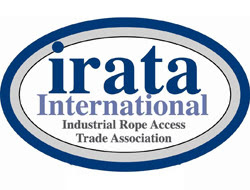Rope Access
The Rope Access course is aimed at those who use ropes to reduce the risk of falling from height.
Full protection using the correct equipment, combined with the use of an independent back up system is essential for working at height safely.
Rope Access is widely used by industrial users all over the world, in a variety of environments, each of which requires specific application equipment.
These training courses cover all the relevant areas of rope access which are common to the IRATA training scheme, with added training which teaches delegates to use operational rescue equipment as well as effective rock-face and slope operation.
Our Rope Access course has been designed by an experienced training team, all holding multiple training qualifications as well as the IRATA Assessor Qualification, ensuring that the course and equipment is aligned with the Rope Access Industry.
The course has 3 stages of progression:
- Level 1– New starter/trainee
- Level 2 – General Operator
- Level 3 – Supervisor
We also offer combined courses:
Level 1 – Trainee
- Company general safety induction
- Personal suspension and equipment introduction, specifications, fitting care and storage
- Equipment/system use limitations
- Back up equipment introduction, fitting and use limitations
- Introduction of Rope Access ropes and storage care.
- Awareness of site environment and work site organisation
- Tool handling, specific to face work at height (hand tools)
- Basic descending (less than vertical, short less exposed situations)
- Basic Ascending (less than vertical, short less exposed situations)
- Awareness of Top Lift System for rescue hoisting
Level 2 – Operator
- All the stage 1 elements
- Rigging of suspension and safety ropes including Knots
- Checking of personal trainee’s equipment prior to start up
- Worksite organisation
- Descending
- Ascending
- Management of suspension back-up ropes
- Rope Manoeuvres
- Descent rescue of colleague (from decent or ascent mode)
- Use of Top Lift system to perform personnel rescue hoist
- Advanced tool handling (power tools)
- Lowering systems (equipment)
- Awareness of lowering (personnel) using Top Lift System
- Conversant with company procedures and risk assessment
Level 3 – Supervisor
- All stage 1 and 2 elements
- Management of anchorage areas for multi person use
- Advanced rope techniques
- Management of Top Lift System for hoisting and lowering rescues
- Equipment records, routing inspection, and redundancies
- Knowledge of Statutes, Regulations standards
- Full conversant with company procedures, risk assessments and methods of work
- Trained and qualified to deliver in house elements of training

